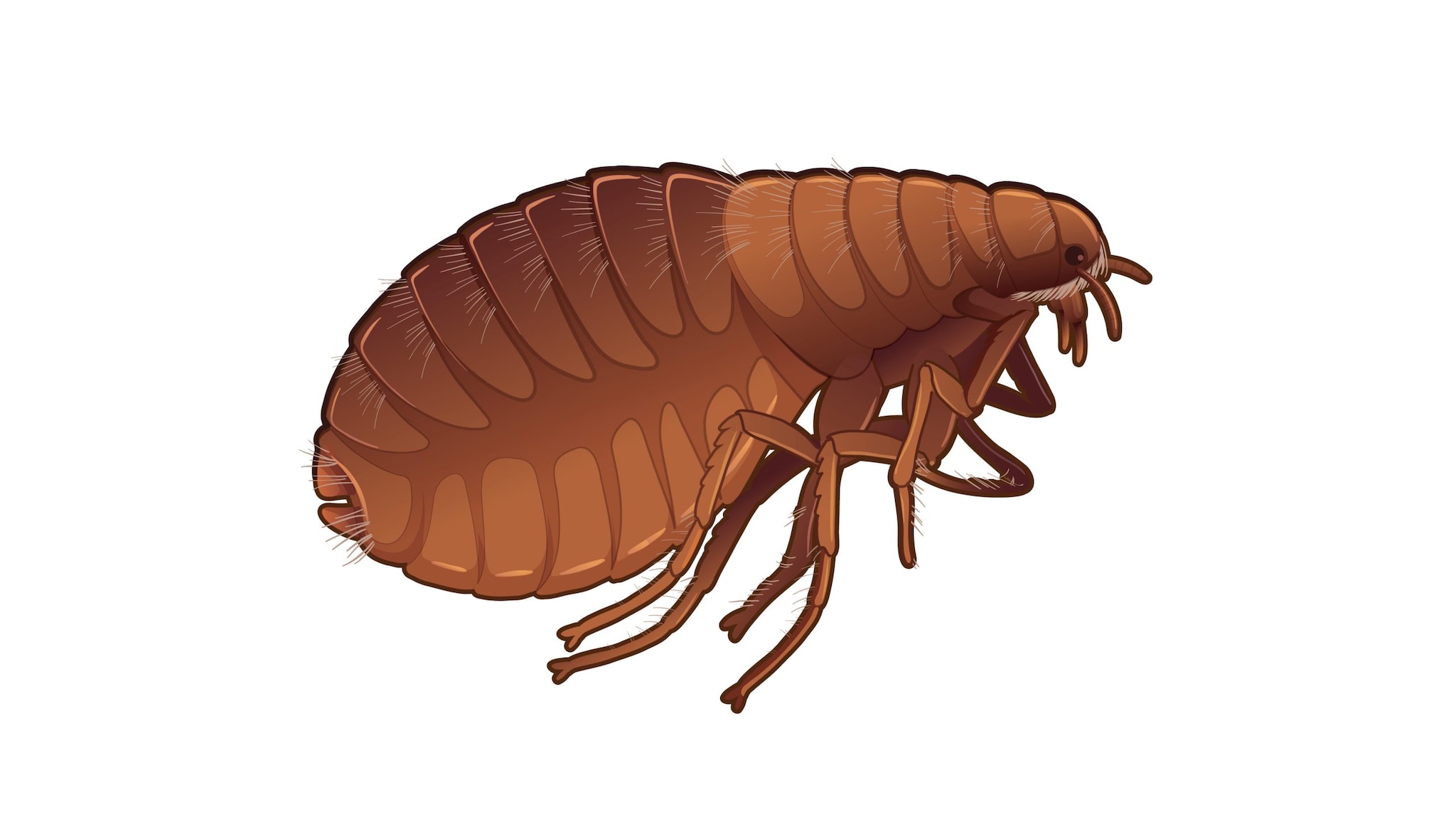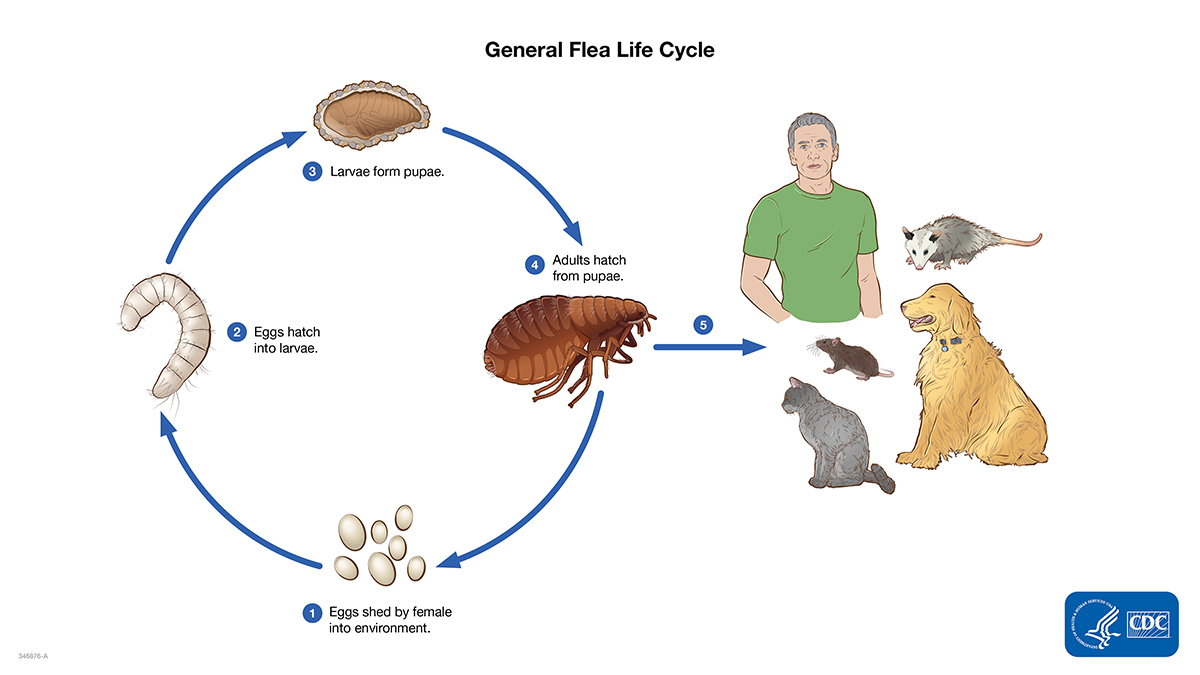Key points
- Most fleas have four life stages: egg, larva, pupa (in a cocoon), and adult.
- The lifecycle of fleas can be very quick or last many months to years depending on the environmental conditions throughout the life stages.

How fleas survive

- After finding an animal or human host and taking a blood meal, adult fleas will mate and begin laying eggs in the fur and surroundings of the host. Eggs will hatch in one to ten days depending on environmental conditions such as temperature and humidity.
- After hatching from an egg, fleas enter their larval stage. Larvae are free moving and feed on blood and flea feces (poop) in order to continue their development.
- Within 5-20 days of feeding on flea dirt, the larvae will spin a cocoon, and enter the pupa stage. The cocoon protects pupa from environmental conditions and insecticides/repellents for several days or weeks until adult fleas are ready to emerge.
- Adult fleas will not emerge from the cocoon until there is a clear presence of a host, such as movement or body heat, which will signal that there is a blood meal readily available.
- Adult females begin to feed from a host within a few hours of emerging from the cocoon and soon after will mate and begin laying eggs.
